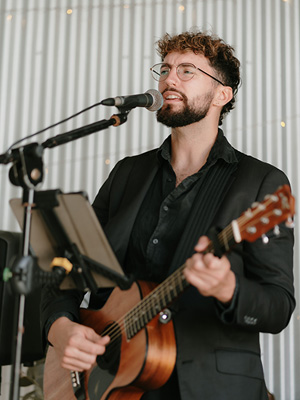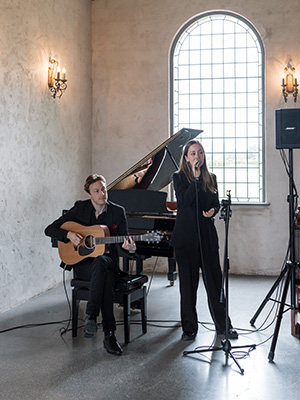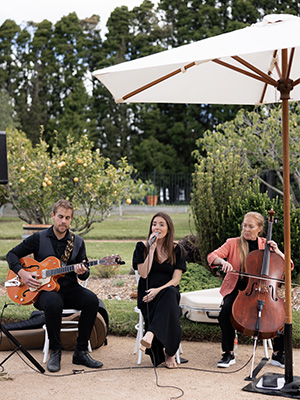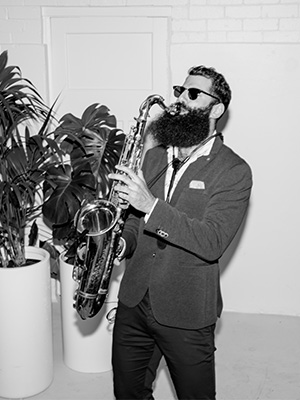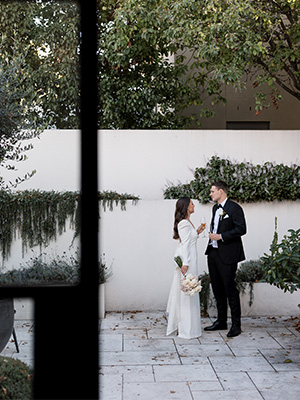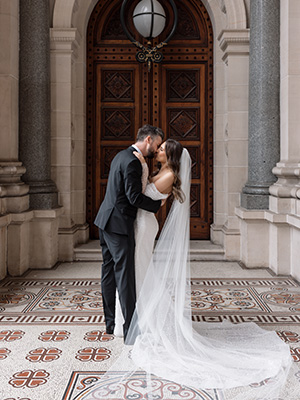Introduction
Consistency amongst our videographers is paramount as a high-quality, high-volume wedding film brand! These guidelines will help us achieve that consistency. You might find that HJ’s approach aligns with your personal shooting style, which is fantastic! However, there might be a few differences, so we want to ensure you’re crystal clear about our shooting style to fulfil the promises made to the couple. We all need to pull together to make this happen.
Our wedding film packages typically come with a single wedding videographer. Our clients lean towards a discreet, candid approach to the day, rather than feeling like stars in a massive production. This keeps the day and the footage authentic and intimate.
Technical Requirements
Minimum Equipment Requirements:
- 3 Cameras (full frame, capable of shooting 4K at 25 & 50 fps). Preferably with matching bodies; if not, matching brands/picture profiles are non-negotiable.
- Lenses with a minimum of 24-100mm focal length – 2.8.
- ND Filters
- 2 Tripods (B + C CAM) and a monopod (ACAM) for speeches/ceremonies only. Go handheld at all other times.
- Wireless Mic or Stick Mics for backup on the mic/lavalier.
- External Audio Recorder (Zoom F6/F3 or similar).
- 4K Drone – Mavic 3 or equivalent
- Various cables for audio: XLR, ¼”, ⅛”, and RCA
- Spotlight and light stand for speeches.
Recording Settings:
- Minimum 4K | 10 BIT quality – HD will not be accepted
- Utilise Slog3 picture profile
- Set to 25fps for ceremony/speeches, 50fps for all other parts of the day
- Use 100fps (if available) for select moments like recessional petals/portraits
- Aim for 48KHz audio – 32-bit is highly preferred
- Avoid using S&Q mode – audio is key in our deliveries.
- Shutter speed is generally double the frame rate, but it’s not a hard and fast rule. Get creative with the shutter during portraits and dancing to achieve shutter drag.
Picture Profiles and Camera Settings:
- We standardly use phantom-neutral monitoring LUTs.
- Ensure that white balance and exposure throughout the day are set manually. Match the white balance between your camera bodies using Kelvin settings.
- Prioritise skin tones for exposure, and be cautious about highlights (like the wedding dress or white shirts) in sunlight to prevent over-exposure.
- Make good use of your camera or monitor’s overlays and meters, be it zebra stripes, histogram, false colour or any other tool that assists you.
- ND Filters are vital for outdoor B-Roll or as needed to prevent overexposure in bright scenes. Aim to expose for highlights – no blown-out skies, silhouette the couple if necessary. Embrace the shadows for a more cinematic feel.
- Keep an eye on ISO noise, particularly during receptions.
- Monitor white balance and colour casts in scenes. Adjust the white balance to prevent orange tints at receptions. DO NOT stick to standard 3200/5500 kelvin. If the room is warm, drop down to 2500. If its cloudy overcast, go up to 7000. We do not want to see orange reception footage
AUDIO SOURCES:
- Clean audio is fundamental in our final films, encompassing both voiceovers and natural or ambient sounds to enrich each scene.
- All formal events (all A-Roll) must have at least two clean audio sources, either from lapel mics or soundboard feeds. You can never have too many backup audio sources!
- Ideally, connect the external recorder to the house or DJ audio, and have backup mics at the podium/speech microphone. Use the appropriate mic sleeves – no gaff tape around the mic!
- Your primary camera should ideally have a shotgun mic throughout the day; however, if this isn’t part of your rig, that’s okay. For us, audio is a priority.
- Wireless transmitters/receivers are permissible, but ensure you have a reliable backup in case the signal interrupts or drops.
- Always have headphones to monitor your audio feeds! Test audio levels with a mic check beforehand and recheck during each event in case of changes.
- Recommended external audio recorder: Zoom F3/F6 or equivalent.
- Suggested backups include Wireless DJI Mics, Sony TX660 (On Mic) and Tascam DR-10L Pro (lapel).
Deliverables to Client:
All film collections includes highlight films, the entire ceremony, and the reception film. These encapsulate the key moments including:
- Letter readings.
- First looks.
- Entire ceremony
- Canape Hour
- Bridal Entrances
- Speeches
- First dances
- Shoe Game/Garter Bouquet Toss/Cake Cut
- Dancing
Letter Reading and Interviews
Upon request, HJ offers interview sessions with our couples. Your schedule will indicate if time has been allocated for these activities. While letter readings are more prevalent, both can be achieved with a similar setup and are preferably done back-to-back if both are requested.
In the early part of the day, people may still get used to the camera presence. Maintain a relaxed atmosphere, allowing pauses or restarts during readings or interviews without pressure. Considering the time constraints during this time, plan to shoot the interviews and/or letter readings with only your A-camera, shooting at 25fps in 4K.
Always prioritise making your subject first. Ensure they are front-lit to prevent exposure issues, positioning them to face the available light while you place yourself on the shadow side. When doing letter readings, do two takes the first for safety with a stationary monopod/tripod focused on the reader, followed by a second take to capture B-roll, close-ups of letters, etc. Ask for the photographer’s presence during the second take only, emphasising the importance of this moment for video and audio capture.
Interview Setup
Interviews can be slightly intimidating for all parties involved. Keeping a casual conversation vibe helps in getting natural responses while flowing through the questions.
Before jumping into the questions, make your subject comfortable by explaining the format and emphasizing that it’s a casual conversation about their wedding and partner. Encourage them to provide context in their answers, either by repeating the question or incorporating it in their response. This method can be used in the film to clarify their narrative.
Sit next to your A-camera, maintaining eye level with the lens, directing them to focus on you rather than the lens. This strategy often yields more natural outcomes, with subjects feeling more comfortable not having the direct gaze of the lens.
Sample Questions:
- How did you and ____ meet?
- What is one characteristic that you absolutely adore about ____?
- Can you pinpoint similarities between you two?
- On the flip side, what differences can you identify?
- Can you remember where your first kiss took place?
- When did you realize that ____ was “the one”?
- What was your friends/family’s reaction upon meeting ____?
- Can you walk me through the proposal?
- What is your favorite memory in your relationship so far?
- Are there any funny stories you can share about your relationship?
- If this camera was ____, what would be your message to them about your future together?
SPEECHES and RECEPTION FORMALITIES
To ensure comprehensive coverage of all key formalities, use two camera angles along with two clear audio sources. This will create a full Documentary Edit and provide clean docu-style footage integrated into the Highlight Film, supplemented with B-roll.
Ensure continuous, uncut coverage of all scheduled key formalities. Only adjust one camera at a time to ensure extensive coverage of the event. Avoid stopping recording during these events unless absolutely necessary. This approach minimizes the number of clips for syncing and retains maximum coverage. Don’t worry about recording transitions like moving the camera; we prefer to have it all.
For long-form events, dynamic movements are not necessary.
First Looks
Firstly, mic your subject appropriately. Set up your B-camera to capture a wide, safe shot on a tripod with manual focus locked. Manually operate your A-camera to get a medium or close-up shot.
Ceremony
Follow a structured approach for ceremonies, modifying based on specific restrictions or types of ceremonies.
- Connect and test the celebrant’s audio if available, placing an audio recorder close to a PA speaker if celebrant miking isn’t an option.
- Set up a static B-camera shot at the back or side angle to get a clear view of the couple.
- For a standard 2-camera ceremony setup, position your A-camera to capture the bride’s facial expressions, adjusting to cover the groom as needed. Maintain mobility to reposition based on event progress.
- With a 3-camera setup, position your C-camera to get close-ups of the groom, adjusting according to the ceremony flow.
- Collaborate with the wedding photographer to secure the best shooting positions, ensuring a seamless workflow. Open communication is vital to prevent obstacles and ensure a smooth process.
DANCING
Once the dance floor opens up, you can switch back to B-Roll style coverage!
- We don’t need long-form coverage of the open dance floor
- One camera angle is perfect for covering the dancing
- Make sure to read the room! A lot of people will get camera-shy when dancing, try to blend in.
- Play with slow shutter speed and timelapses if time permits.
Drone Coverage
Drone coverage is captured if time permits and is always stipulated on the run sheet. The main purpose of drone coverage is to capture establishing and environmental shots of the venue and surrounding area.
- 4K 50fps footage is preferred, but 4K 25fps is fine.
- Footage should be captured in DLOG.
- Shots should be captured with smooth, slow movements, being careful not to make sudden or jarring adjustments with the gimbal.
- Always start with far-away wide shots, before trying to capture anything closer or involving foreground subjects, such as trees or other buildings.
- Please capture multiple takes of different shots and movements, it’s especially easy to miss camera stutters from the wind while piloting.
- Do not pilot your drone directly above or close to any people at the wedding.
- We aren’t expecting drone coverage of the couple or any guests, unless the couple specifically requests it during the day, and it’s possible to safely capture those shots.
Other Notes
Clip Length
Maintain long-form recording throughout the event coverage. Especially during the formal events, make sure to have your cameras roll extensively to make less clips syncing with external audio, ensuring comprehensive coverage during the events.
Weddings with Multiple Shooters
In case our couples opt for additional videographers, we hire an associate shooter, usually for a duration of 8 hours. This second shooter generally handles the groom preparation and also the ceremony and reception setups, while capturing canapés as the main shooter accompanies the couple. Despite the addition of a second shooter, a minimum of 4-camera setup for the ceremony and reception formalities remains mandatory.
Working with Clients and Vendors
As a videographer with HJ, remember, you might be the only representative our clients meet in person! Your demeanor and interaction with the couples will greatly influence their overall experience with us. Hence, we appreciate your friendly and approachable demeanor, recognizing the crucial role you play in facilitating a pleasant journey for our clients.
Maintaining a good and collaborative relationship with other vendors is also paramount. Be it photographers, DJs, wedding planners, or others, fostering good relations ensures a smoothly running event. Give precedence to seasoned photographers in terms of directing, but do not hesitate to step in to get the required shots. A candid approach is preferred by most clients but do assert yourself to capture missed shots or ask for resets or holds on poses. Maintain clear communication with DJs and/or MCs to be in the loop of event schedules and get heads-up where possible, to avoid being caught off guard during key moments.
Dress Code
While not strictly enforced, we do encourage a dress code similar to what you would wear when attending a wedding as a guest. Wearing dark attire helps maintain a clean and professional appearance. Acceptable clothing includes polos, button-downs, simple dresses, slacks, and chinos, blending well without being restrictive. Dress appropriately for the weather to avoid being uncomfortable. Please avoid wearing jeans, worn-out sneakers, t-shirts, or hats.
Post Wedding
Footage and Audio Upload
All footage and audio must be uploaded to our Dropbox account before 7 days post-wedding. The login details are provided below:
- Username: videographers@heyjack.com.au
- Password: Cinema123!
Ensure folders are labelled and well ordered as per below:
- Folder Name: 04_22_Grace_Tom ( “Month”_”Day”_”Bride Name”_”Groom Name”)
- Footage| ACAM | BCAM | CCAM | Drone
- Ceremony Audio | Main | Backup
- Reception Audio | Main | Backup
- Letter Reading Audio | Main | Backup
Post-Event Feedback and Invoicing
Once you have uploaded all the footage to Hey Jack’s Dropbox account, jump onto this website to fill out your post-event feedback form and submit your invoice HERE
